Exploring Precision Medicine's value
Consensus is building on the promise of genetic testing and other technological advances to help individualize testing, prevention and treatment for better outcomes.
At Priority Health in Michigan, about 24 patients with advanced cancers have gotten comprehensive genomic profiles of tumors since the managed care plan launched a testing program in October 2014. The aim? To give more information to physicians trying to help patients understand treatment options.

FoxThe cost? The genome tests cost $4,000 to $5,000, whereas it costs $7,000 to $15,000 per month for one drug therapy-and multiple drugs may be used, says John Fox, MD, Priority Health’s associate vice president of medical affairs. “We think there’s an unmet need, especially for rare, aggressive tumors...The goal is to get patients the optimal therapy the first time,” he says.
It’s been almost a dozen years since the Human Genome Project finished sequencing and mapping all human genes, allowing a first-time look at a person’s entire genetic blueprint. Since then, consensus is building on the promise of genetic testing and other technological advances to help individualize testing, prevention and treatment for better outcomes. But the road is bumpy as payers, health systems, hospitals and physicians in a fragmented delivery system face an overwhelming array of information to discuss with patients and act upon-if it is clinically actionable at all.
The aim of precision medicine-a term derided by some healthcare stakeholders as sounding more like marketing hype than science-is to develop more accurate diagnostic tools and therapies to help predict what will work best for the individual instead of using a one-size-fits-all approach.
Related:BLOG: Genetic counseling helps patients make informed decisions
That means not only performing genetic profiling to help treat cancers and other conditions, but also combining molecular information with environmental, behavioral and other data. Then comes interpretation and finding ways to overcome logistical and cost challenges-and handling issues ranging from patient privacy and consent to coding, electronic health records (EHRs) and coverage-to create a framework that allows its integration into healthcare delivery.
“I think it’s a real challenge for managed healthcare,” says Michael Millenson, president of Health Quality Advisors LLC and adjunct associate professor of medicine at Northwestern University. “In some cases, this can be curative of very deadly diseases, and how do you say, ‘We won’t pay for this’? [But] those who pay for care have to understand how to make decisions and build the infrastructure as well.”
By building the infrastructure, such technology can be used to its fullest potential, Millenson says, adding, “And because it’s so expensive, that makes it even more important.” He notes that genetic testing is like any other clinical intervention: “It can be wonderful or not as effective as we hoped.”
NEXT: Promising developments for some patients

Despite declining costs for analyzing a person’s genes, the cost of specialty therapies targeting specific genes or mutations is “high and climbing higher,” according to a New York Times story on April 27. It is a paradox that the Obama administration, even as it supports precision medicine, is trying to manage specialty medicine costs by seeking congressional permission for Medicare to negotiate prices with drug companies, the story said, quoting a Memorial Sloan Kettering Cancer Center official who said it “would be unfortunate if we make scientific progress and then price patients out of the drugs we develop through that progress.”
Daryl Pritchard, PhD, vice president of science policy for the Personalized Medicine Coalition (PMC) in Washington, D.C., describes precision medicine and accountable care as “the two big movers in healthcare reform”-and says how they will converge is a matter of great interest.
“Since completion of the human genome project in 2003, it’s been a conversation-about how [personalized medicine] could revolutionize medicine,” Pritchard says. “It’s the coalition’s sense that the conversation is changing from concept to reality.” It’s no longer a question of whether it can be done, but instead, how can we do it, he says.
Pritchard is leading the coalition’s initiative into how to facilitate precision medicine’s adoption within healthcare delivery. He says PMC’s working group, which began in December 2014 and has about 15 academic health centers and 15 community hospital systems, hopes to identify a set of challenges, along with potential solutions and best practices, for publication in a peer-reviewed journal by the end of 2015.
Pritchard says the group, whose participants include Mayo Clinic, Inova Health System, Intermountain Healthcare, Mission Health, and Sutter Health, has identified five broad categories of challenges:
- Education and awareness of providers, consumers and payers;
- Institutional operations (how best to develop and integrate a precision-medicine system);
- Data management (how to collect and store information and incentivize its proper use);
- The decision-making process (understanding whether diagnostic tests are clinically actionable, how clinicians view tests’ perceived value, and how to offer support tools and involve patients in decision-making); and
- Ethical, legal and societal issues (how to obtain patient consent, deal with incidental findings and offer community support services).
Promising developments for some patients
The U.S. Department of Health and Human Services says the promise of precision medicine already has arrived for a small but growing number of patients: White blood cell counts returned to normal in eight of 10 people with one type of leukemia using a new drug that targets a specific gene. And genetic testing for HIV patients is helping doctors decide who will be helped by a new antiviral drug and who will experience harmful side effects.
Indeed, many local and regional providers, including Wake Forest Baptist Medical Center in Winston-Salem, North Carolina, tout precision medicine as rapidly advancing cancer care, allowing them to provide patients whose cancers aren’t responding to current treatment with more precise, targeted therapies.
A large research collaboration is underway between the Moffitt Cancer Center in Tampa, Flordia, and Ohio State University’s Comprehensive Cancer Center. Called the Oncology Research Information Exchange Network, it aims to provide evidence to physicians of an individual’s best therapeutic options, including clinical trials, through data analysis and sharing. To date, 100,000-plus patients have agreed to participate by donating tissue; and four additional cancer centers joined the effort in February.
In an effort to jump start the process nationwide, President Obama unveiled a federal Precision Medicine Initiative in January 2015, putting $215 million into his proposed budget for fiscal year 2016. Of that, $130 million would build a volunteer database of 1 million Americans, a cohort expected to be large enough to move precision medicine from concept to reality. Another $70 million would go to the National Cancer Institute to scale up efforts to identify genetic markers for cancer and develop more effective treatment approaches. The remaining $15 million would fund issues related to regulation and to interoperability across secure health information technology systems.
NEXT: Initiatives for private and state efforts
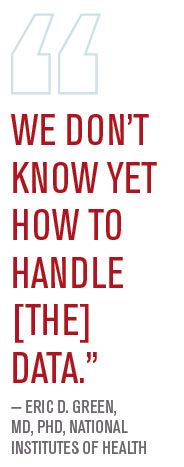
“It’s about establishing demonstrations on how best to implement and understand what’s effective,” says Eric D. Green, MD, PhD, director of the National Human Genome Research Institute at the National Institutes of Health (NIH). The effort’s initial focus is on cancer, which is “ready to go,” he says, “but with more robust research we think there will be more conditions.”
Green says there’s a distinction between research and developing a scientific evidence base, and actual implementation. He explains that the federal research effort, through study of a large cohort, will serve as the basis for how to use individualized information.
“We don’t know yet how to handle [the] data,” Green tells Managed Healthcare Executive. “I’m sure many health systems wouldn’t want to do this right now because it isn’t what they’re poised to do.” But Green says it is reasonable to think about what will happen soon if pieces start falling into place. “We’re poised to accelerate something that’s going to be very powerful,” Green says. “...Today, if you have an acutely ill newborn in the NICU and that child is crashing and burning before your eyes-that child could have a genome sequencing in a matter of days. Because it’s cheap compared to the care you’re delivering and there’s the potential for better treatment.”
Green foresees an increasing number of contexts for the use of genome sequencing: “I predict over the next five to 10 years, for the majority of cancers we will want to get genomic data on that tumor.”
As Congress decides whether to fund the federal Precision Medicine Initiative, an NIH advisory group expects to issue the implementation plan by about September, Green says. “If all goes well, we’ll put out the first request for applications in September/October,” he says, noting this may occur even without assurances of money.
Separately, as part of a bipartisan effort to reform healthcare regulation, payment and delivery called the 21st Century Cures Initiative, the House Energy and Commerce Committee was set to introduce legislation during the week of April 27-after a year’s worth of hearings-in which personalized medicine will play a significant role.
Meanwhile, private sector and state efforts are heating up. Among those initiatives ahead of the curve:
- Using $3 million in state start-up funds, the California Initiative to Advance Precision Medicine, a statewide collaboration led by the University of California at San Francisco (UCSF), was launched April 14 to spur public-private collaboration across California by building an infrastructure to advance precision medicine-oriented data, tools and applications. It will create two demonstration projects, inventory private and public precision-medicine projects in the state, and convene experts “to ensure the secure and fair exchange of data and knowledge,” state officials say.
- UCSF also is leading a public-private partnership that began in October 2014 with a $17 million, five-year award from the Department of Defense, analyzing data on thousands of patients that could lead to more precise diagnoses and patient-specific treatments, and better clinical trials, for traumatic brain injuries.
- Blue Cross Blue Shield of Michigan and the University of Michigan Health System recently formed a statewide collaboration of physician organizations and laboratories to improve genetic testing practices. The Genetic Testing Resource and Quality Consortium wants to develop best practices that help medical professionals determine whether genetic testing should be used in common clinical scenarios and to decide which tests will be of most benefit.
- In Pennsylvania, Geisinger Health System, an early adopter of EHRs, is involved in a large-scale, long-term genomic collaboration with a subsidiary of Regeneron Pharmaceuticals, Inc. Designed to identify genetic variants associated with human disease, the effort has sequenced the exomes of 31,000 people since its January 2014 launch; it intends to sequence about 250,000 more.
In a related move, Geisinger on April 14 opened its Precision Health Center housing clinical research space as well as a patient care center that includes a telemedicine genomics program. It is for Geisinger’s biobank participants, if researchers find something amiss with their genetic samples, as well as for patients outside its system who want another opinion on genetic testing.
NEXT: Integrated health systems' role
Integrated health systems’ role
When the Obama administration announced the Precision Medicine Initiative, federal officials said a key element is forging strong partnerships with the private sector. Specifically, they cited the role of “academic medical centers, researchers, foundations, privacy experts, medical ethicists, and medical product innovators” in helping to lay the foundation.
Yet, NIH’s Green describes it as “absolutely important” to include integrated health systems in the effort. “What Geisinger’s doing is what we’re interested in....This is a model for what we want to do on a much bigger national scale,” he says. He describes the need to partner with integrated health systems, genome companies and mobile health technology groups as vital because of interconnections.
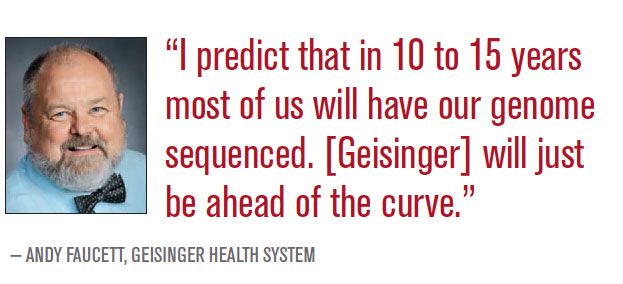
When Geisinger was setting up its MyCode Community Health Initiative-a system-wide biobank to store blood and other samples for research use-it realized that, in many ways, its central Pennsylvania location was advantageous because of its stable population of large, multi-generational families. More than 50% of the program’s participants had used Geisinger for 20-plus years, and since Geisinger handles high-risk care, they likely stayed within its system for most treatments.
Andy Faucett, director of policy and education for Geisinger’s Office of the Chief Scientific Officer, says the health system started internally with its biobank “at a time when everyone was terrified about genetic information....We now know with sequencing, we’ll find things [that] people will want to know.” Thus, Geisinger has broadened its consent form so researchers can do “just about any type of studies on those samples,” from a single gene to an entire genome, he says.
Currently, MyCode and smaller participating biobanks have nearly 75,000 consents, of which there are about 50,000 samples already collected, he says. And the program is growing, adding 1,500 to 2,000 new consents per month. He cites a consent rate of up to 95%, depending on the clinic.
Working with Regeneron, Geisinger is sequencing 1,200 to 1,500 individuals weekly, Faucett says, describing it as likely the largest genome sequencing effort in the U.S. He explains it is not confined to cancer. “We have 20,000 genes, and we’re looking at all 20,000,” he says. “We’re not sequencing for specific targets...We want to take people with diabetes, obesity [and so on] and look for genetic indications...and we have permission to look at their active EHRs.”
Geisinger’s program is analyzing BRCA1 and BRCA2 (breast cancer), colon cancer, anesthesia risk, and heart disease including sudden cardiac death, searching for known pathogenic changes to participants’ genes, he says. Geisinger expected to begin returning results in late April, notifying physicians first and then telling patients several days later under its open reports policy. “We anticipate 2% of individuals will have a positive finding-and each will have six to eight family members who carry the same change,” he says. Due to Regeneron’s high volume, genome sequencing costs less than the standard $4,000, but there are recruitment and storage costs for samples and data, he notes.
Several years ago, physician-led Geisinger “saw genomics as a major part of the future of medicine” and pushed ahead on its genomics work, Faucett says, adding, “I predict that in 10 to 15 years most of us will have our genome sequenced. [Geiginger] will just be ahead of the curve.”
He estimates that Geisinger, with its infrastructure, logistics, and consent forms in place, is “probably two-plus years ahead” of the federal initiative. He says Geisinger hopes to participate in the federal effort’s public-private partnerships, and has offered advice since its inception.
Institutions interested in precision medicine must invest in it, looking at everything from staffing levels to determining how to put information into EHRs in a user-friendly format, Faucett says, adding, “We’ve hired a lot of genetic counselors and we’re rapidly building our team.”
Moreover, Geisinger is in active discussions with payers, Faucett says. “We have our own payer arm-Geisinger Health Plan-and we’re trying to gather the right information to show them [i.e., other payers] that [genetic testing] would be beneficial and cost-effective to do.”
NEXT: Michigan builds on a collaborative approach
Michigan builds on a collaborative approach

ShareIn Michigan, David Share, MD, MPH, the Michigan Blues’ senior vice president of Value Partnerships, describes the genetic testing collaboration as building on nearly two dozen statewide collaborative efforts over the years. A hybrid community practice and hospital-based initiative, it is extending its reach to primary care specialists, genetics counselors, pathologists and other provider types across Michigan.
“We’re on the verge of this explosion of more information and potential costs,” Share says. He cites a pressing need for a knowledge base in a current environment with “a plethora of information about genetic testing and a paucity of understanding.” Despite long-term potential, there now is “much more uncertainty than certainty,” he says. “It’s tough for an expert to keep up, impossible for the generalist.”
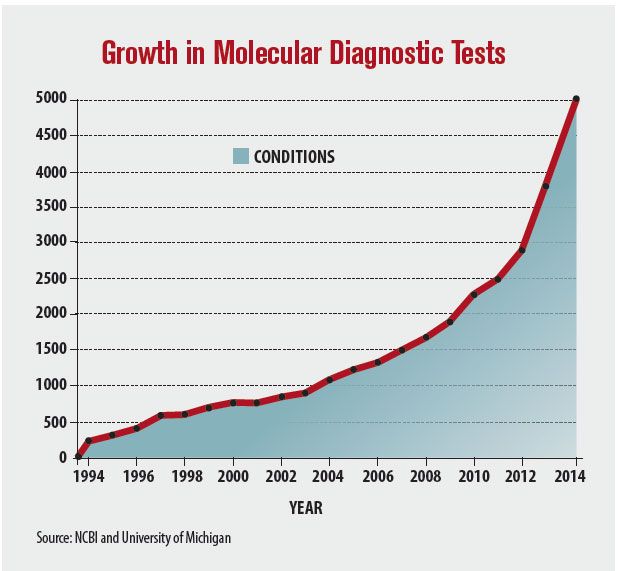
Share worries about some tech firms’ push toward broad genetic testing. “Once you do ‘shot gun’ testing [on people not at risk], then you’re more likely to get misleading information, like mutations with no clinical significance,” he says.
The genetic testing quality consortium is working to pull together expertise in Michigan and provide tools to clinicians to guide their practices, he says. Recruitment of providers is expected to continue into the fall, followed by information gathering and development of clinical guidelines.
“We expect to start with about 10 to 15 communities of practitioners,” then grow statewide, he says, stressing the effort “isn’t for the Blues to determine coverage. The goal here is not to control anybody, but to gain knowledge so people can make better choices.”
In making its own coverage determinations on all genetic testing, not only breast cancer, the Michigan Blues has contracted with a company of genetic testing experts to guide the insurer “in sifting through clinical evidence on which tests offer meaningful help in treatment,” Share says.
“Other health plans are establishing contracts with companies that will do a panel of hundreds of tests for $1,500, and it sounds like a bargain,” Share says. “But then you’re...drinking from a fire hose, taking in huge amounts of information...” He says this could result in too much data that is not necessarily actionable, perhaps worrisome to patients, and likely to snowball into unneeded tests. “If you test everyone with a broad panel-that’s a lot more expensive than targeting where it’s needed,” Share says. If a physician does 100 blood tests, five to eight may be slightly elevated or low, “but that may be just normal variation,” he explains.
Share anticipates more efficient use of resources and savings if there is “intelligent evidence-based testing and treatment,” and people who don’t benefit from genetic tests don’t get them. Ultimately, he says, “We think we’ll deliver much more care to the community” with the initiative.
NEXT: Cigna proceeds cautiously
Cigna proceeds cautiously
Cigna Corp. considers coverage for genetic testing-ranging from sequencing a single gene, such as BRCA, to multigene panels looking at five, 10 or 20 genes, to full genome sequencing-in the same way the managed care organization makes other coverage decisions, says David Finley, MD, Cigna’s national medical officer for enterprise affordability. “Do scientific studies prove an association with beneficial health outcomes? That’s the standard we use to cover anything, including multigene panels,” he says.
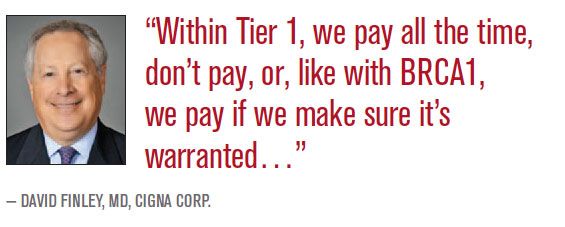
Finley says there is no question that BRCA testing, which identifies genes linked to a greater risk for developing breast and ovarian cancers, is tied to beneficial health outcomes. By contrast, he says, “There might be multi-gene panels that companies sell, saying, ‘If you look at something like BRCA, you could look at other things’...but there’s no evidence that this further testing leads to beneficial health outcomes.”
Cigna’s approach is to look at each individual test and hold it up to the basic standard, explains Finley. In addition to BRCA, Tier 1 genetic tests are those performed for such illnesses as cystic fibrosis, colon cancer, and various neonatal conditions; and they have sufficient volume to merit their own CPT codes. In general, Finley says, Cigna pays for Tier 1 tests “because they’ve been around for awhile, they’re well understood, they’re not abused...and we wouldn’t achieve anything by managing these tests.”
“Within Tier 1, we pay all the time, don’t pay, or, like with BRCA1, we pay if we make sure it’s warranted [based on personal and family cancer history] and that patient gets genetic counseling” prior to testing, Finley says.
For Cigna, Tier 2 essentially consists of 10 CPT codes, each of which has five to 250 different genetic tests based on how resource-intensive they are, he says. If it’s “high intensity, and we don’t know what it’s for, we don’t cover” the genetic tests. He notes, for example, that tests for Alzheimers, and some cholesterol and lipid tests, are not clinically actionable.
Another category is pharmacogenetics tests that show whether an individual will metabolize a drug in a different way due to genetic mutation. Finley notes that Cigna’s policy is not to cover a test for how a person metabolizes Coumadin, an anticoagulant, because it doesn’t change or affect how a patient would be treated and monitored. “But we cover other pharmacogenetic testing,” he adds.
With respect to genetic testing of tumor tissues, Finley says that Cigna covers tests including OncotypeDX, a multigene panel. Some women with breast cancer may have one or two lymph nodes positive and, while they may not fall within the guidelines for chemotherapy, they may be advised to get chemotherapy if this test were to show they are at higher risk of recurrence, he explains.
Given these various categories, Finley says, “If someone says, ‘Do you cover precision/personalized medicine?’ I would say, ‘What do you mean?’ Right now, I think there’s more information out there than the medical community knows what to do with...and I think we need to be careful.”
Finley says the volume of genetic testing is increasing. Cigna saw “a marked increase” after actress Angelina Jolie had a double mastectomy to prevent breast cancer after a positive BRCA test in 2013, “and that increase has been maintained,” he says.
NEXT: Narrowing down risk factors
Narrowing down risk factors

MenonAs for preventive efforts, some firms are marketing products measuring an individual’s genetic risk of certain diseases. Chief executive officer Prakash Menon of BaseHealth, says his firm’s health assessment platform analyzes a person’s genetic, lifestyle, medical and environmental factors to calculate risks for 40 of the most complex diseases, including Type 2 diabetes and stroke. It isn’t a direct-to-patient model; data go to physicians who walk through patients’ assessments, set up action plans and track progress. It works with wearable fitness and other devices to get patient information directly into the platform.
In April, the California-based firm added to its stand-alone platform for physicians, introducing a bundle of technology and services that allows its products to be integrated into hospitals’ existing systems. Menon says BaseHealth’s current focus is primarily on medium-sized regional medical centers handling around 20,000 patient visits annually, and concierge physician groups.
BaseHealth also is in discussions about offering its product at a per-member-per-month rate to plans trying to manage high-risk members and to differentiate themselves by offering wellness platforms, he says. “We will talk with ACOs [accountable care organizations] when the time is right,” he adds.
BaseHealth’s platform doesn’t require a $4,000 full genome sequencing, Menon says; instead, it uses genome typing based on a saliva sample for about $200. “We don’t make money on it; it’s just a cost pass-through to the lab,” he says. The monthly cost per patient, including monitoring, is about $9.75.
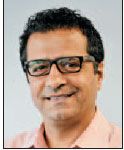
Education is a strong component of BaseHealth’s product. If the patient has 20 risk factors, for example, the physician may want to consider a narrower focus. “You’ve got to make this personalized,” says Hossein Fakhrai-Rad, BaseHealth founder and chief scientific officer. “And within those two or three [risk factors], you may just focus on blood pressure...so the patient doesn’t get overwhelmed.
“We’ve been commercializing for the last eight months,” Menon says, citing a dramatic increase of interest in the past four to five months. “When we started, it was harder to explain...but I think now everybody gets it.,” he says. “The challenges...are just trying to fit it into business models that work.”
NEXT: Value of specialized treatments
Value of specialized treatments
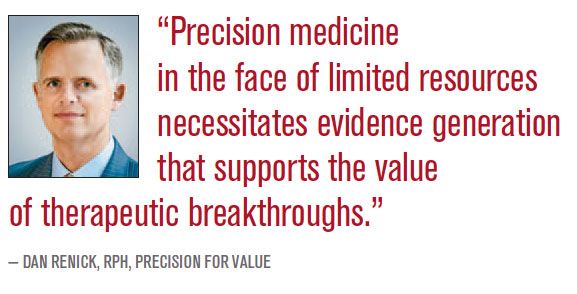
With more treatment breakthroughs and rising use of specialty pharmaceuticals, the question is how to ascribe value, says Dan Renick, RPh, president of Precision for Value, a unit of Precision for Medicine, a specialized services firm supporting next-generation drug development and commercialization. He says this value proposition is especially daunting when plans may incur significant costs now but derived benefits may take years, perhaps after affected individuals dis-enroll.
“Precision medicine in the face of limited resources necessitates evidence generation that supports the value of therapeutic breakthroughs,” says Renick, a former Humana Inc. pharmacy executive. He works with managed-care divisions of pharmaceutical companies as they attempt to define products’ value for plans, often starting with baseline models that health plans then utilize with data on their specific populations and geographies.
Unlike therapies for asthma, chronic obstructive pulmonary disease and other chronic conditions that foster short-term benefits by avoiding emergency-room visits and hospitalizations, Renick says a costly hepatitis C treatment may avoid a liver transplant many years from now. “Plans ask, ‘How can I pay such a huge cost upfront and perhaps not derive value later on?’” he says.
To illustrate his work, Renick, while declining to discuss specifics, cites use of a highly specialized therapy that greatly reduces hospitalizations. While modestly higher in price than standard therapy, the new therapy may be provided at home at much lower costs since the standard requires an infusion center. “So you recognize the new formulation offers value beyond what previously existed in the market...If you solely look at the price, you may overlook value,” he says. “In that case, we supported the [pharmaceutical] client to effectively analyze the evidence and communicated the total value proposition to payers.”
Renick distinguishes between making new therapies available in the plan formulary and actively letting drug makers talk to physicians. “As integrated delivery systems become payers, they actively advocate for the use of that product...because they’re bearing risk within their systems,” he says. It begins with broad formulary acceptance, he says, “then you go to integrated delivery systems that may more actively move patients to newer therapies to take advantage of the costs of lower administration.”
Judy Packer-Tursman is a freelance writer in Washington, D.C.
David Calabrese of OptumRx Talks New Role, Market Insulin Prices and Other Topics 'On His Mind'
April 13th 2023In this month’s episode of the "What's On Your Mind podcast," Peter Wehrwein, managing editor of MHE connects with the now Chief Clinical Officer of OptumRx Integrated Pharmacies, David Calabrese. In this conversation, David touches on his transition in January as OptumRx’s former chief pharmacy officer and market president of health plans and PBMs to his new role as Chief Clinical Officer where he now focuses more on things such as specialty pharmacy to home delivery — with an overall goal of creating whole-patient care. Throughout the conversation, Calabrese also touched on the market’s hot topic of insulin prices and behavioral health services within the OptumRx community, among other topics.
Listen
Briana Contreras, editor of Managed Healthcare Executive, spoke with Nancy Lurker, CEO and president of EyePoint Pharmaceuticals. Nancy shared a bit about EyePoint and how the organization’s innovative therapies are addressing patient needs through eye care, and most importantly, she addressed C-Suite positions like the CEO role. Nancy shared advice for those seeking to reach the CEO level, especially toward women in healthcare and other roles, and what it takes to run a biopharma company.
Listen